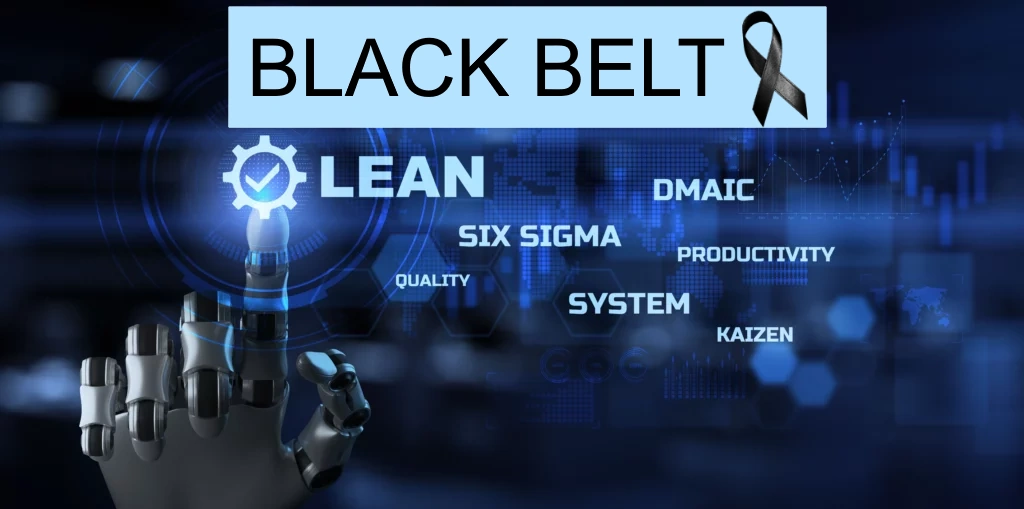Lean Six Sigma Black Belt Course
$3,995.00
WGA’s Lean Six Sigma Black Belt Certification course is designed for individuals, managers, engineers, process owners, directors, etc. seeking to become experts in Continuous Improvement initiatives within an organization. Attaining a LSSBB Certification adds value to both the individual as well as the organization, including Scrum Masters, Product Owners, Project/Program Managers, and/or Team Members. However, any organization or anyone within an organization looking to become more effective in development and delivery of its products and services can gain valuable knowledge and insight by taking this course. With completion of the course, participants will be prepared to help move your organization forward using Lean Six Sigma principles.
Description
Program Description
A Certified Lean Six Sigma Black Belt (CLSSBB) is among the most sought-after professional skills in any industry today. As a Lean Sis Sigma Black Belt, your expertise of Lean Six Sigma techniques and strategies can significantly contribute to the organization’s bottom line and more importantly, meet customer expectations.
Lean Six Sigma addresses the best of both worlds, Lean (identification and elimination of waste), and Six Sigma (elimination of variation and defects). As a Black Belt, you will lead and mentor other colleagues in a Continuous Improvement Program, work with management and process owners to identify opportunities for improvement project initiatives and manage a portfolio of Lean Six Sigma projects consistent with business strategy needs.
Typically, a full-time position, the LSSBB plays a significant role with a focus on improving quality, productivity, cost reduction, and revenue.
Who should take this course?
WGA’s Lean Six Sigma Black Belt Certification course is designed for individuals, managers, engineers, process owners, directors, etc. seeking to become experts in Continuous Improvement initiatives within an organization. Attaining a LSSBB Certification adds value to both the individual as well as the organization. Scrum Masters, Product Owners, Project/Program Managers, and/or Team Members. However, any organization or anyone within an organization looking to become more effective in development and delivery of its products and services can gain valuable knowledge and insight by taking this course. With completion of the course, participants will be prepared to help move your organization forward using Lean Six Sigma principles.
Lean Six Sigma Black Belt Certification Course Curriculum
Section-0.0 Start Here
- Course Introduction
- Video Controls
- List of Course Materials and System Requirements
- Course Description/Objectives
- Certification Requirements
- How to Install the Analysis ToolPak in Excel
- SigmaXL Add-in to Excel
Section-1.0 Six Sigma and Lean Overview
- Six Sigma Overview
-
- What is Six Sigma?
- Six Sigma History
- Six Sigma Approach Y=f(x)
- Six Sigma Methodology
- Roles and Responsibilities
- Lean Overview
- What is Lean?
- Lean History
- The Five Principles of Lean & TAKT Time
- The Eight Sources of Waste (MUDA)
- Lean and Six Sigma
Section-2.0 Define Phase
- Lean Six Sigma Fundamentals
-
- Defining a Process
- VOC/VOB/VOP and CTQs
- Design for Six Sigma
- QFD and FMEA (DFMEA and PFMEA, Risk Priority Number (RPN)
- Cost of Poor Quality (COPQ)
- Pareto Analysis (80:20 Rule)
- Theory of Constraints
- Lean Six Sigma Projects
- Six Sigma Metrics
-
- Business Case and Charter
- Project Team Selection, Stakeholder Analysis, Team Roles and RACI
- Project Risk Management
- Project Planning
- Process Mapping
-
- SIPOC
- Value Stream Mapping
- Process Mapping – Swim Lane
- Spaghetti Mapping
- Brin Thought/Mind Mapping
Section-3.0 Measure Phase
- Process Definition
-
- Cause and Effect (Fishbone) Diagram
- Cause and Effect Matrix
- Process Mapping (review)
- Failure Modes and Effects (FMEA) Analysis
- Six Sigma Statistics
- Basic Statistics
- Descriptive Statistics
- Distributions and Normality
- Graphical Analysis
- Measurement System Analysis (MSA)
-
- What is MSA? Why? Purpose? Use?
- Precision and Accuracy
- Bias, Linearity, and Stability
- Gage R&R
- Variable and Attribute Data
- Process Capability
-
- Capability Analysis
- Concept of Stability
- Attribute and Discrete Capability
- Monitoring Techniques
Section-4.0 Analyze Phase
- Patterns of Variation
-
- Multi-Vari Analysis
- Classes of Distribution
- Inferential Statistics
-
- Understanding Inference
- Sampling Techniques and Uses
- Sample Size
- Central Limit Theorem
- Hypothesis Testing
-
- Goals of Hypothesis Testing
- Statistical Significance
- Risk: Alpha and Beta
- Types of Hypothesis Tests
- Hypothesis Testing: Normal Data
-
- One and Two-Sample T-Tests
- One Sample Variance
- One Way ANOVA
- Hypothesis Testing: Non-Normal Data
-
- Mann-Whitney
- Kruskal-Wallis
- Moods Medium
- Freidman
- One Sample Sign
- One Sample Wilcoxon
- One and Two-Sample Proportion
- Chi-Squared (Contingency Tables)
- Test of Equal Variance
Section-5.0 Improve Phase
- Simple Linear Regression
-
- Correlation
- X-Y Diagram
- Regression Equations
- Residual Analysis
- Multiple Regression Analysis
-
- Non-Linear Regression
- Multiple Linear Regression
- Confidence Intervals
- Residuals Analysis
- Data Transformation, Box Cox
- Stepwise Regression
- Designed Experiments
-
- Experiment Objectives
- Experimental Methods
- DOE Design Considerations
- Full Factorial Experiments
-
- 2k Full Factorial Designs
- Linear and Quadratic Models
- Balanced and Orthogonal Designs
- Lean Solutions Concepts
-
- Work Cells
- Single-Piece Flow
- Changeovers
- Capturing the Improvement Data
- Planning and Facilitating Kaizen Events
- Solution Matrix/Consensus Criteria Prioritization
- FMEA and RPN
Section-6.0 Control Phase
- Lean Controls
-
- Control Methods for 5S/6S
- Kanban
- Poke-Yoke
- Visual Management
- Standard Work
- Statistical Process Control (SPC)
-
- Data Collection for SPC
- I-MR Chart
- Xbar-R Chart
- U Chart
- P Chart
- NP Chart
- X-S Chart
- CumSum Chart
- EWMA Chart
- Control Methods
- Control Chart Anatomy
- Subgroups, Variation, Sampling
- Six Sigma Control Plans
-
- Cost Benefit Analysis
- Elements of the Control Plan
- Elements of the Response Plan
- Project Documentation
- D.C.A., DMAIC, and Other Continuous Improvement Processes
Review of Objectives

